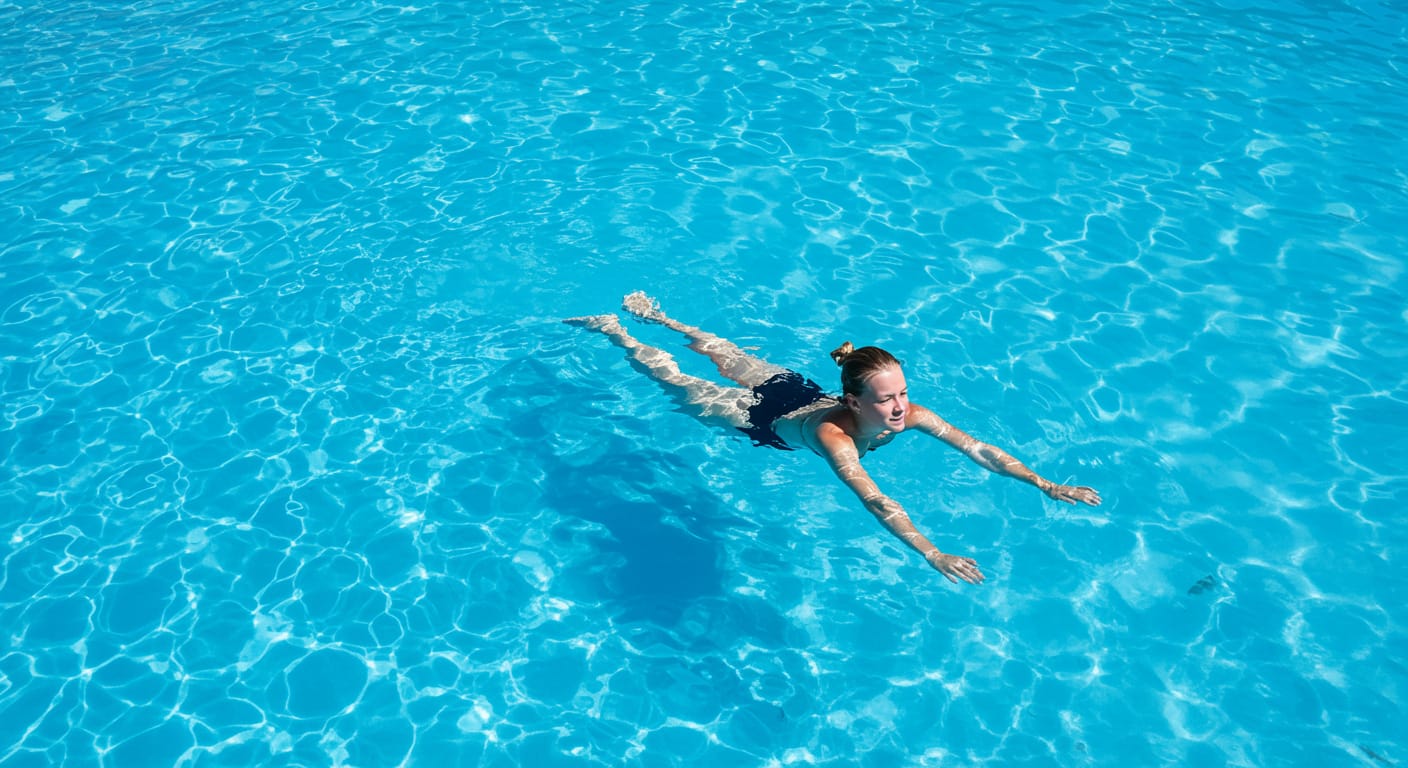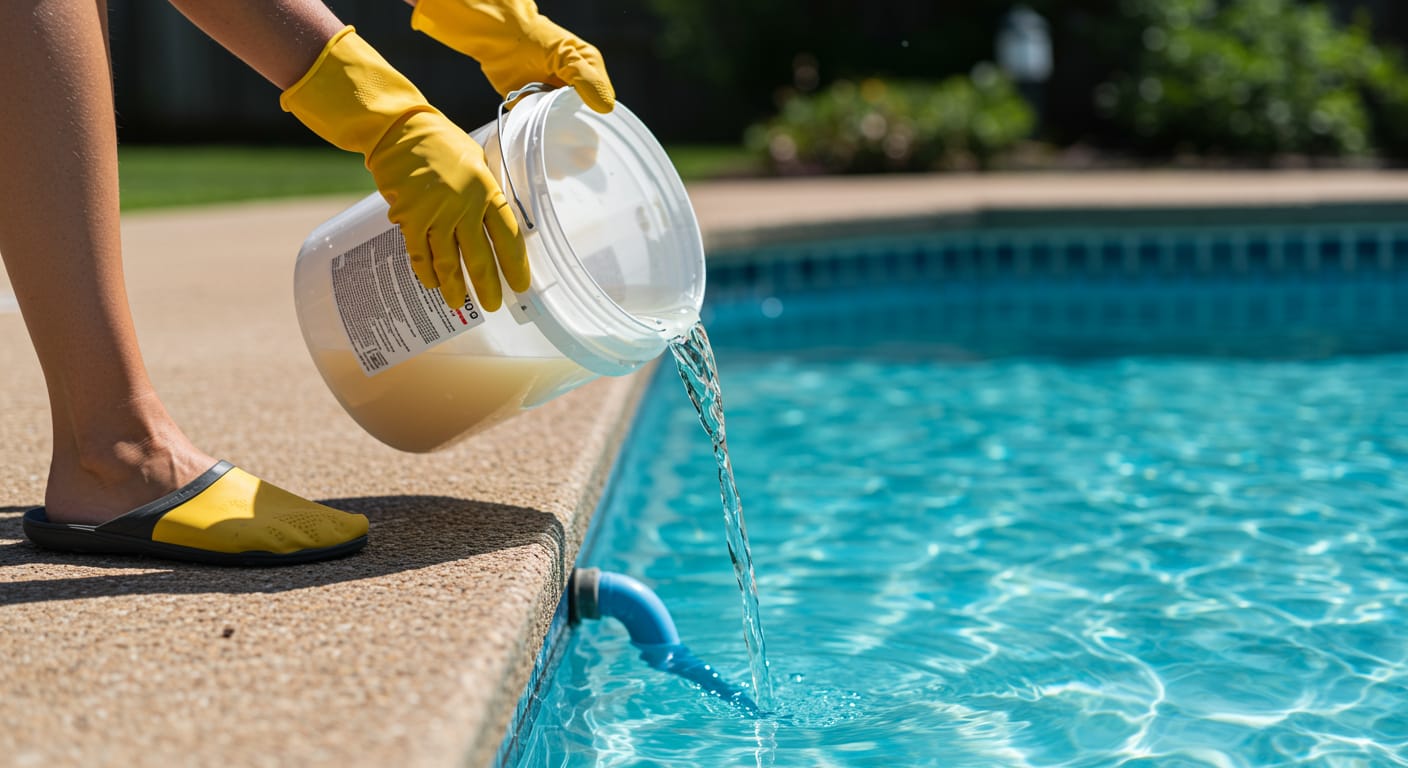How Much Borax Should You Add to Your Pool?

Trying to keep your pool water perfectly balanced can feel like a losing battle. You fix one thing, and something else goes haywire. If you're tired of fighting with your pH levels or seeing the first signs of algae, the answer might already be in your laundry room. A simple box of borax is one of the cheapest and most effective ways to get stable, sparkling clear water.
This guide will show you exactly how and why to use it, so you can spend less time guessing and more time swimming.
What Borax Does for Your Pool
Borax, also known as sodium tetraborate, is a game-changer for pool maintenance. Its main job is to raise the pH, but that's just the beginning. Using borax creates a better, more stable swimming environment all around.
It Raises and Locks in Your pH
Borax essentially does two jobs at once. First, as an alkaline substance, it gives your pH a gentle, controlled boost without messing with your other levels, like total alkalinity.
Second, and more importantly, it creates a "pH shield" in the water. This shield, a borate buffering system, is fantastic at stopping your pH from rising on its own. If you have a saltwater generator or a waterfall that constantly pushes your pH up, this buffer will slow that process way down. That means fewer pH swings and less acid you have to add.
It Helps Prevent Algae
Borates are great at stopping algae before it starts. While it won't clear up a green pool, keeping a borate level of 30-50 ppm makes it tough for algae to get a foothold. This proactive step can cut down on your chlorine use and save you money on algaecides.
It Makes the Water Feel Better
Swimmers almost always notice the difference in how the water feels. Borates give the water a soft, silky texture that reduces the eye and skin irritation that people often blame on chlorine.
Calculate the Correct Amount of Borax for Your Pool
When it comes to pool chemistry, precision matters. Here’s how to figure out exactly how much borax you need.
Know Your Pool's pH and Volume
Before you add anything, you need two numbers:
- Current pH Level: Use a reliable test kit or strips for an accurate reading. For a truly precise starting point, a smart monitor like the Aiper HydroComm can send real-time pH data straight to your phone, taking the guesswork out of the equation.
- Pool Volume: You have to know how many gallons your pool holds. If you're not sure, you can find plenty of online calculators to estimate it based on your pool's shape and size.
A Quick-Start Dosage Guide
For a rough estimate, a good rule of thumb is to use 20 ounces (about 2.5 cups) of borax for every 5,000 gallons of water. This should raise your pH by about 0.5.
Remember, this is just a starting point. It's always better to add a little less than you think you need. You can always add more later.
For Precision: Using a Pool Borate Calculator
To nail the exact amount, use an online pool calculator. You can plug in your pool's volume and your current pH, and it will tell you precisely how much borax to add.
What Happens If You Add Too Much Borax?
Adding too much borax will send your pH too high, which can cause cloudy water and scale buildup on your pool surfaces. High pH also makes your chlorine less effective. If this happens, you'll need to use a pH reducer (like muriatic acid) to bring the levels back down.

How to Add Borax to Your Pool
The process is simple, but doing it the right way ensures the borax dissolves properly and is safe to handle.
1. Gear Up. Even though it's a household product, borax is still a chemical. It’s smart to wear gloves and safety glasses to avoid irritation. You'll also need a clean 5-gallon bucket.
2. Dissolve it First. Never dump borax powder straight into the pool. It will just sink and cake on the bottom, where it can stain the surface. Instead, fill a bucket halfway with warm water (or pool water) and slowly stir in the measured borax until it's completely dissolved.
3. Spread it Evenly. With the pump running, walk around the edge of the pool and slowly pour the dissolved solution into the deep end, letting the jets distribute it.
4. Let it Circulate, Then Retest. Let the pump run for at least 4-6 hours to mix the borax in completely. Afterward, test your pH again to see if you hit your mark. If you're using a 24/7 monitor like the Aiper HydroComm, you can just pull up the app to see the updated reading instantly and track the change over time.
Borax vs. Other Pool Chemicals
- Borax vs. Soda Ash: Both raise pH, but soda ash has a big impact on Total Alkalinity. If your alkalinity is already fine, borax is the better choice for targeted pH control.
- Borax vs. Baking Soda: Baking soda is for raising Total Alkalinity and barely affects pH. Borax is the opposite. Use baking soda for alkalinity, borax for pH.
- Borates vs. Borax: It's simple: Borax is what you add. Borates are what you end up with in the water, and they provide the buffering and anti-algae benefits.
Frequently Asked Questions
Q: Is it safe to swim after adding borax?
A: Yes, once it's fully dissolved and circulated (about 4-6 hours). Just double-check that your pH is in the normal range (7.2-7.8) before jumping in.
Q: Will borax make my pool cloudy?
A: It shouldn't if you dissolve it first. Cloudiness usually only happens if you add way too much and your pH shoots above 8.0.
Q: How often do I need to add borax?
A: Borates don't get used up or evaporate. You only lose them from splash-out or backwashing. You'll usually get your levels set at the start of the season and will only need small top-ups if you lose a lot of water.
Q: Can Borax damage pool equipment?
A: No, borax does not damage pool equipment. In fact, the borates created by adding borax act as a corrosion inhibitor, helping to protect metal parts like ladders, light rings, and internal heater components from rust and degradation. This is especially beneficial in saltwater pools where corrosion is a more significant concern.
Q: Can I use Borax and chlorine at the same time?
A: Yes, borax and chlorine are compatible and work together in your pool, but you should not add them at the same moment or mix them directly. Best practice is to add pool chemicals one at a time. Add the borax as directed, let the water circulate for a few hours, and then add chlorine if needed. This prevents any potential reactions and allows the borax to stabilize the pH, which helps the chlorine work more effectively.
Q: How long after adding Borax should I retest pH?
A: You should wait at least 4-6 hours after adding borax to retest your pool's pH. This allows for one full "turnover," where all the water in your pool has a chance to pass through the circulation system, ensuring the borax is evenly distributed. Testing sooner may give you an inaccurate reading from a concentrated area.
Q: What is the ideal borate level in pool water?
A: The ideal borate level for a swimming pool is between 30 and 50 parts per million (ppm). This range is the sweet spot for effective algae prevention and pH buffering. Levels below 30 ppm won't provide the full benefits, while levels above 50 ppm don't add significant value and are unnecessary.

